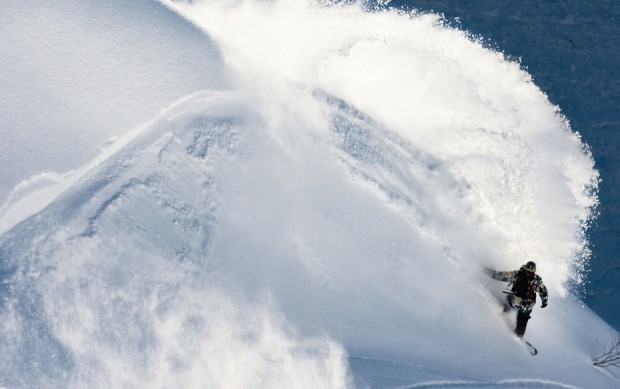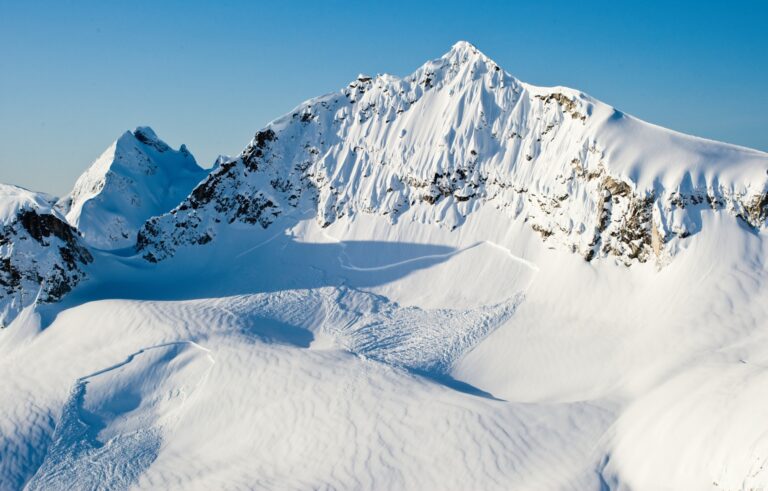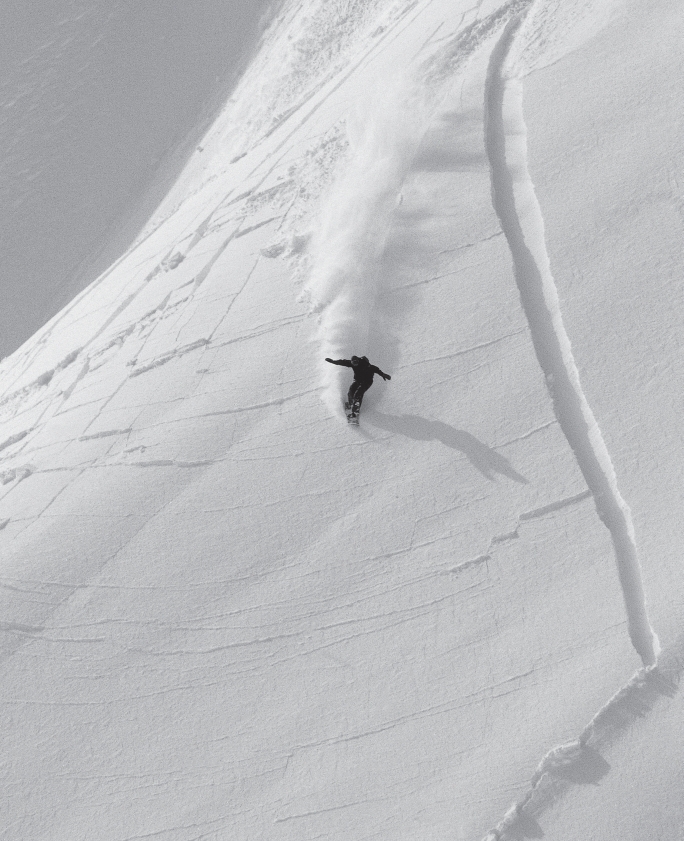
I’ve just come back from an epic day’s charging with freeride legend Jeremy Jones, so this month I thought we’d take a look at what it takes to make that video-quality run. This is the moment when it all comes together: you, your ride and the mountain. A dream line combines different elements of snowboarding with the natural terrain; you should be the freestyler, the jibber and the big mountain soul surfer all rolled into one. Welcome to the ‘fine art of freeriding’.
1. Get the basic skills – You can only play with the skills you’ve got, so you need to get out there and try new things. Remember, snowboarding’s not about getting from A to B but about what you do in between! Getting to know one run well allows you to practice your riding technique, learn new tricks and begin playing with the terrain – without coming up against anything unexpected. Pick your favourite run and get things dialled!
2. Get creative – Once you have a good run going and some new tricks in the bag, you need to start getting creative with the terrain. See the banks as waves to carve and slash, and the lips at the side of the piste as rails to slide. Rollers can be nollied off, or try skidding the tail out in a blunt slide before dropping down the other side. Look for natural kickers to launch off and try to keep everything flowing smoothly. Ride your whole run a different way each time, always without stopping.
3. Challenge yourself – Now you’re in the groove, it’s time to up the ante with some ‘on sight’ descents -these are descents that you’ve not ridden before but are in locations where you can check them out from the chairlift or the bottom. Start on something quite short, with easy-to-read terrain and nothing too serious that needs avoiding. Try to plan out your line, noting the features you’d like to use, and remember to imagine everything from the top down, so in reverse if you’re looking from the bottom. Gradually work your way up to steeper and deeper runs.
4. Think on your feet – Most of the big descents you see in the movies, although not previously ridden, have been studied and visualised thoroughly beforehand –Mr Jones has waited 10 years for the right conditions to tackle some faces. Ultimately, though, once you drop in on a line for the first time, you’re going to be making decisions and adjustments as you go. Try to keep a flowing line, look ahead at what’s coming up, and try to visualize your position on the face as you’ve researched it. If you don’t know what’s coming up, slow your pace and try to find some higher ground that will give you a visual on the slope below. Once you see it’s all good you can charge and play, but always be ready to adjust your line if the terrain or conditions are different to how you imagined.
5. Get creative (again!) – You’re not on your favourite run anymore, but you should now have the skills to spot features quickly and know how to use them. Channel your inner soul-surfer and charge up the banks, sliding the top before cutting back in. Look for things you can hit from the side if possible, especially if it’s steep. You’ll almost always land facing straight down the hill, so be ready to hold some speed on the run-out! Drops feel great, but again the landing needs to be steep enough to realistically ride out, so scope it beforehand. When you approach a drop you’ll not be able to see the landing, so even a small drop-off can seem like a massive leap into the abyss. Make sure you know the speed and line, and be ready to straight line out of there at mach 10. Don’t try to slow down too soon or you’ll butt check! If it’s deep, try to power the tail into the snow and dynamically snap round the end of the turn, filling the air with snow like a pro. Then you can ‘enter the white room’ by cutting back through the white wave you’ve created and out into the sunlight the other side.
Now go get charging!
Neil McNab is one of Britain’s most experienced freeriders. As a UIAGM High Mountain Guide, and an ISIA International Ski and Snowboard Teacher, he is also one of the only snowboarders in the world fully qualified to teach and guide in the backcountry. Neil lives in Chamonix, France, where he runs McNab Snowboarding – an independent company specialising in ‘The Fine Art of Riding Mountains’ since 1995.


